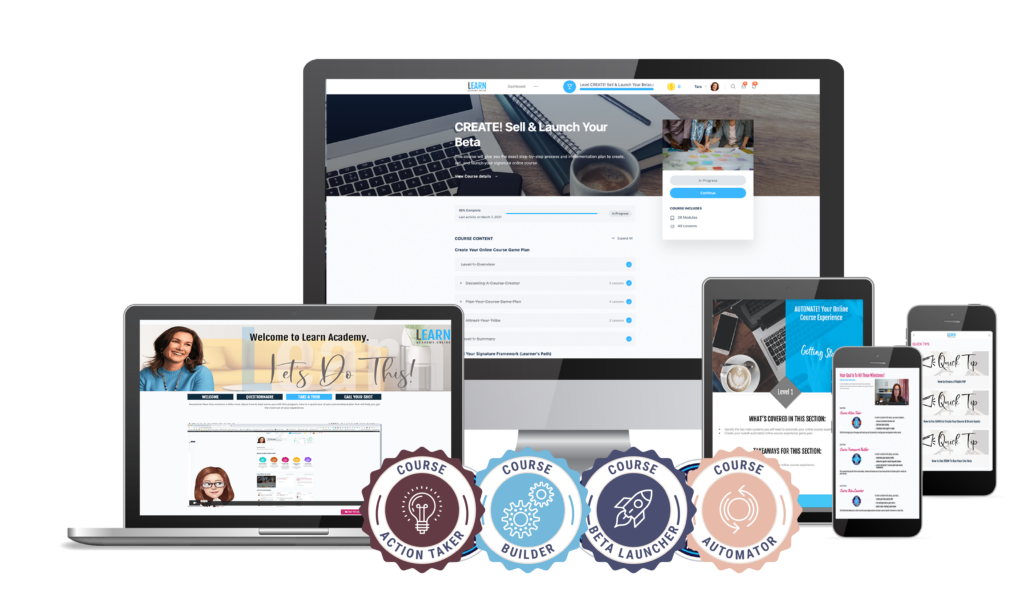Happy 4th of July! As we celebrate independence, let’s track the right metrics in our business – introducing the Freedom Metrics Dashboard – built to help you measure the things that matter in your business.
The Vanity Metrics Trap That’s Destroying Business Owners
It’s become epidemic among entrepreneurs who chase revenue, followers, and growth metrics without measuring what actually matters: freedom.
Here’s the brutal truth about traditional business metrics:
Revenue means nothing if you’re trading your life for it. You can have a million-dollar business and still feel like you’re drowning. High revenue with low freedom is just expensive slavery.
Profit margins don’t matter if you have no life margins. What good is a 40% profit margin if you’re working 80 hours a week and missing your kids’ soccer games?
Social media followers are worthless if you’re following everyone else’s definition of success. You can have 100K followers and still be miserable because you’re not measuring what actually fulfills you.
The problem isn’t that these metrics are bad – it’s that they’re incomplete. They measure business performance without measuring business purpose.
The Freedom Metrics Revolution
After that breaking point in my agency business, I made a radical decision. I stopped tracking vanity metrics and started tracking freedom metrics.
The results were extraordinary:
- Within 6 months, I reduced my working hours from 73 to 35 per week
- My revenue initially dropped 30%, but my profit margins increased to 67%
- I started taking real vacations (phone off, laptop at home)
- Most importantly, I fell in love with my business again
How did I do it? By prioritizing lifestyle first, business second. I implemented what I now calls her “Freedom Metrics Dashboard” – a simple but powerful system that tracks the numbers that actually matter for business owner happiness and success.
The 4 Freedom Metrics That Changed Everything
Based on my transformation and the success of other business owners who’ve implemented this system, here are the four critical freedom metrics you need to track:
Freedom Metric #1: Time Freedom Score
Formula: (Actual Hours Worked ÷ Desired Hours Worked) × 100
Why This Matters: Time is the only truly non-renewable resource. You can make more money, but you can’t make more time. If your business is consuming more time than you’re willing to give, you don’t have a business – you have a demanding boss that doesn’t pay overtime.
Real Example: Marcus, a business coach, discovered his Time Freedom Score was 156%. He was working 62 hours per week when he wanted to work 40. By implementing time-blocking, automation, and saying no to low-value activities, he improved his score to 87% within 90 days – and his revenue actually increased by 23%.
Freedom Metric #2: Choice Freedom Score
Formula: (Number of Ideal Projects/Clients ÷ Total Projects/Clients) × 100
This metric measures how much of your work energizes you versus drains you.
Why This Matters: Energy is everything in business. When you’re working on projects that drain you, you’re not just unhappy – you’re also performing below your potential. High-energy work creates better results, which creates better clients, which creates more freedom.
Real Example: Jennifer, a web designer, had a Choice Freedom Score of 28%. She was taking any project that paid the bills, including websites for industries she didn’t understand or enjoy. By raising her rates and specializing in eco-friendly businesses (her passion), she improved her score to 91% and increased her average project value by 340%.
Freedom Metric #3: Income Freedom Score
Formula: (Passive/Recurring Revenue ÷ Total Revenue) × 100
This measures how much of your income comes from sources that don’t require your direct time.
Why This Matters: If 100% of your income requires 100% of your time, you’re self-employed, not truly free. Income freedom comes from building assets, systems, and recurring revenue streams that work even when you’re not.
Real Example: David, a consultant, had an Income Freedom Score of 12%. He was trading time for money with no scalability. By creating a group coaching program and developing online courses, he increased his score to 64% within 18 months, allowing him to take a three-month sabbatical without losing income.
Freedom Metric #4: Impact Freedom Score
Formula: Number of People Positively Impacted ÷ Hours Worked
This measures your leverage – how many people you’re helping per hour of work.
Why This Matters: Impact freedom is about creating exponential value. When you increase your leverage, you can help more people in less time, creating both financial and emotional fulfillment.
Real Example: Lisa, a career coach, had an Impact Freedom Score of 0.8 (she was helping less than one person per hour worked due to administrative overhead). By automating her intake process and creating group programs, she increased her score to 3.2, tripling her impact while reducing her hours.
How to Build Your Freedom Metrics Dashboard
Now that you understand the four key freedom metrics, here’s how to implement your own dashboard:
Step 1: Set Up Your Tracking System
Recommended Tools:
- Beginner: Google Sheets (free, simple, accessible anywhere)
- Intermediate: Airtable (more features, still user-friendly)
- Advanced: Notion (highly customizable, integrates with other tools)
What to Track:
- Weekly hours worked
- Number of clients/projects
- Client/project satisfaction ratings (1-10)
- Revenue sources (active vs. passive)
- Number of people impacted by your work
Step 2: Calculate Your Baseline
Before you can improve, you need to know where you’re starting. Calculate your current freedom metrics:
Time Freedom Score Example:
- Desired hours per week: 40
- Actual hours per week: 55
- Time Freedom Score: (55 ÷ 40) × 100 = 138%
- Goal: Get to 80% or lower
Choice Freedom Score Example:
- Total current clients: 12
- Clients you’re excited about: 8
- Choice Freedom Score: (8 ÷ 12) × 100 = 67%
- Goal: Get to 90% or higher
Step 3: Set Your Freedom Targets
Based on your baseline, set realistic but ambitious targets:
3-Month Targets:
- Time Freedom Score: Improve by 20%
- Choice Freedom Score: Improve by 15%
- Income Freedom Score: Improve by 10%
- Impact Freedom Score: Improve by 25%
12-Month Targets:
- Time Freedom Score: 80% or lower
- Choice Freedom Score: 90% or higher
- Income Freedom Score: 50% or higher
- Impact Freedom Score: Double your baseline
Step 4: Create Your Weekly Review Process
Every Friday, spend 15 minutes reviewing your freedom metrics:
- Data Entry: Update your dashboard with the week’s data
- Analysis: Look for trends and patterns
- Action Planning: Identify one action for the following week that will improve your lowest-scoring metric
- Reflection: Ask yourself, “Did my business serve my freedom this week, or did I serve my business?”
The Freedom Metrics Dashboard Template
Here’s a simple template you can copy and customize:
Week of: [Date]
Time Freedom:
- Hours worked: ___
- Desired hours: ___
- Score: ___% (Goal: 80% or lower)
Choice Freedom:
- Total projects/clients: ___
- Exciting projects/clients: ___
- Score: ___% (Goal: 90% or higher)
Income Freedom:
- Total revenue: $___
- Passive/recurring revenue: $___
- Score: ___% (Goal: 60% or higher)
Impact Freedom:
- People helped: ___
- Hours worked: ___
- Score: ___ (Goal: Increase monthly)
Weekly Action: What one thing will I do next week to improve my lowest-scoring metric?
Real-World Success Stories
Case Study 1: The Overwhelmed Agency Owner
Background: Tom ran a successful PR agency but was working 80+ hours per week and hadn’t taken a vacation in two years.
Initial Metrics:
- Time Freedom Score: 200%
- Choice Freedom Score: 45%
- Income Freedom Score: 5%
- Impact Freedom Score: 1.2
Actions Taken:
- Implemented project management software
- Raised rates by 40% and became more selective with clients
- Hired two full-time employees
- Created a recurring revenue stream with monthly PR packages
Results After 12 Months:
- Time Freedom Score: 75%
- Choice Freedom Score: 88%
- Income Freedom Score: 45%
- Impact Freedom Score: 2.8
- Revenue decreased 15%, but profit increased 67%
- Took a 3-week European vacation with his family
Case Study 2: The Burned-Out Consultant
Background: Maria was a successful business consultant earning $200K annually but felt trapped by her business model.
Initial Metrics:
- Time Freedom Score: 150%
- Choice Freedom Score: 60%
- Income Freedom Score: 15%
- Impact Freedom Score: 0.9
Actions Taken:
- Transitioned from hourly to project-based pricing
- Created a group coaching program
- Developed online courses
- Partnered with other consultants for referrals
Results After 18 Months:
- Time Freedom Score: 85%
- Choice Freedom Score: 95%
- Income Freedom Score: 62%
- Impact Freedom Score: 4.1
- Revenue increased 40% while working 30% fewer hours
- Launched a successful mastermind program
Case Study 3: The Solopreneur’s Breakthrough
Background: Kevin was a freelance web developer making good money but couldn’t scale beyond his personal capacity.
Initial Metrics:
- Time Freedom Score: 175%
- Choice Freedom Score: 70%
- Income Freedom Score: 8%
- Impact Freedom Score: 1.5
Actions Taken:
- Specialized in e-commerce websites for local businesses
- Created template-based solutions
- Developed maintenance packages for recurring revenue
- Built a team of subcontractors
Results After 10 Months:
- Time Freedom Score: 90%
- Choice Freedom Score: 92%
- Income Freedom Score: 55%
- Impact Freedom Score: 3.6
- Doubled his income while working 25% fewer hours
- Launched a successful website template business
Advanced Freedom Metrics Strategies
Once you’ve mastered the basic four metrics, you can add these advanced measurements:
Energy Freedom Score
Formula: (High-Energy Activities ÷ Total Activities) × 100
Track which activities energize you versus drain you. Aim for 70% or higher.
Stress Freedom Score
Formula: (Low-Stress Days ÷ Total Days) × 100
Monitor your daily stress levels on a scale of 1-10. Aim for 80% of days being 5 or lower.
Relationship Freedom Score
Formula: (Quality Time with Loved Ones ÷ Total Waking Hours) × 100
Measure how much time you’re spending on relationships that matter. Aim for 25% or higher.
Learning Freedom Score
Formula: (Hours Spent Learning ÷ Total Working Hours) × 100
Track investment in your own growth and development. Aim for 10% or higher.
The Psychology Behind Freedom Metrics
Understanding why freedom metrics work is crucial for long-term success:
The Measurement Effect
What gets measured gets managed. By tracking freedom metrics, you naturally make decisions that increase your autonomy and satisfaction.
The Awareness Advantage
Most entrepreneurs are unconsciously optimizing for the wrong metrics. Freedom metrics create awareness about what’s really driving (or destroying) your happiness.
The Motivation Multiplier
When you see your freedom scores improving, it creates a positive feedback loop that motivates you to continue making freedom-focused decisions.
The Clarity Creator
Freedom metrics help you say no to opportunities that look good on paper but don’t serve your actual goals.
Common Mistakes and How to Avoid Them
Mistake #1: Tracking Too Many Metrics
Problem: Information overload leads to analysis paralysis. Solution: Start with just the four core freedom metrics. Add advanced metrics only after you’ve mastered the basics.
Mistake #2: Perfectionism
Problem: Waiting for the “perfect” tracking system before starting. Solution: Start with a simple spreadsheet. You can always upgrade later.
Mistake #3: Inconsistent Tracking
Problem: Sporadic measurement leads to unreliable data. Solution: Set a weekly 15-minute calendar appointment for updating your dashboard.
Mistake #4: Ignoring the Data
Problem: Tracking metrics without taking action based on the insights. Solution: Always identify one specific action to improve your lowest-scoring metric.
Mistake #5: Comparing to Others
Problem: Your freedom metrics are personal – comparing to others defeats the purpose. Solution: Focus on your own progress and improvement trends.
Tools and Resources for Freedom Tracking
Recommended Software
Free Options:
- Google Sheets: Simple, accessible, integrates with other Google tools
- Notion: Highly customizable, great for comprehensive tracking
- Airtable: More powerful than spreadsheets, easier than databases
Paid Options:
- Asana: Great project management with custom fields
- ClickUp: All-in-one workspace with dashboard capabilities
Time Tracking Tools
For Accurate Time Freedom Scores:
- Toggl: Simple time tracking with detailed reports
- RescueTime: Automatic time tracking and analysis
- Forest: Gamified focus and time management
Automation Tools
To Improve Your Scores:
Your Freedom Metrics Action Plan
Ready to implement your own freedom metrics dashboard? Here’s your step-by-step action plan:
Week 1: Foundation
Choose your tracking tool (start with Google Sheets if unsure)
Set up your basic dashboard template
Calculate your baseline freedom metrics
Set your 3-month and 12-month targets
Week 2: Implementation
Start tracking daily (just 5 minutes each evening)
Identify your biggest freedom constraint
Plan one specific action to improve your lowest score
Schedule your weekly review time
Week 3: Optimization
Complete your first weekly review
Adjust your tracking system based on what’s working
Take action on your planned improvement
Share your goals with an accountability partner
Week 4: Expansion
Add any advanced metrics that resonate with you
Analyze your first month of data for trends
Celebrate improvements and learn from setbacks
Plan your next month’s focus area
The Freedom Declaration Challenge
In honor of Independence Day, I challenge you to make your own freedom declaration. Here’s a template:
“I, [Your Name], declare my independence from metrics that don’t serve my freedom. I commit to measuring what matters and making decisions that increase my autonomy, not just my income. I will track my Time Freedom, Choice Freedom, Income Freedom, and Impact Freedom weekly, and I will not sacrifice my happiness for revenue that doesn’t serve my life.”
Sign it, date it, and put it somewhere you’ll see it every day.
Your Freedom Starts Today
It takes consistent measurement, conscious decision-making, and the courage to prioritize freedom over vanity metrics.
Freedom isn’t a destination – it’s a daily practice. Every day, you get to choose whether your business serves your freedom or destroys it. The only way to make that choice consciously is to measure what matters.
Your freedom metrics dashboard isn’t just a tracking tool – it’s a declaration of independence from the entrepreneurial hustle culture that says you have to sacrifice everything for success. It’s a commitment to building a business that serves your life, not the other way around.
The entrepreneurs who achieve true freedom – the ones who build businesses that enhance their lives instead of consuming them – all have one thing in common: They measure what matters.
Your freedom journey starts with a single question: What will you measure today that will make you more free tomorrow?
The answer to that question will determine whether you build a business or a prison.
Choose freedom. Start measuring. Your future self will thank you.
Ready to implement your own Freedom Metrics Dashboard? Start tracking what matters and build the truly free business you deserve. If you want help, schedule a free discovery call with Tara.







